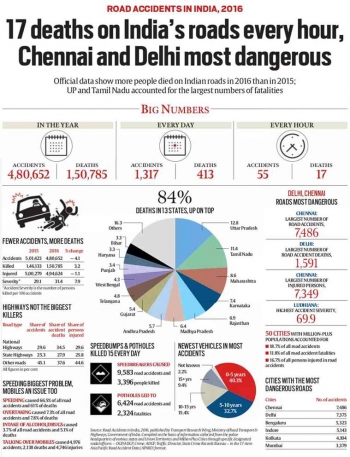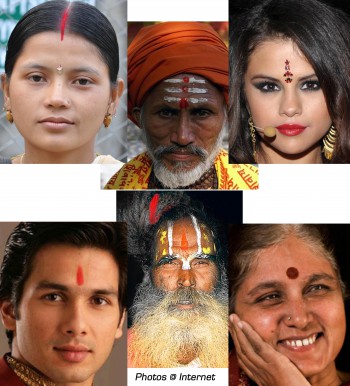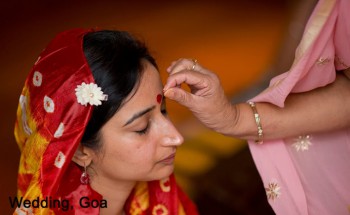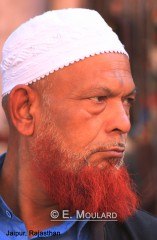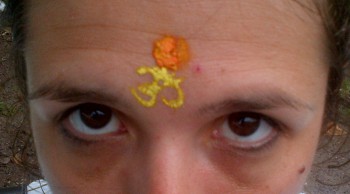10/16/2017
When Indians re-invent creativity...
I am often asked to describe Indians. Which is absolutely an impossible task. But there is a trait that I often forget and yet explains so much: that’s jugaad. Of course it is so unique that there is no English translation. But I would translate it by “the art of thinking out of the box and find solutions nobody would have thought of”. Indians are masters of this. Beside them, MacGyver is a debilitating Penguin.
Here are some examples to illustrate.
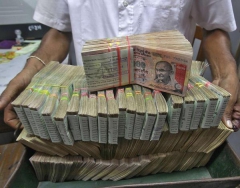 When Modi, the Prime Minister, launched his ‘demonetization’ at the end of 2016, he thought that at least 70% of people would not dare put their black money back in the bank and would rather destroy it, for fear of facing fines, public shaming etc.. He was wrong and had underestimated his compatriots who have found ways to deposit more than 99% of all the notes (source https://www.ft.com/content/7dbe0e14-8d8a-11e7-a352-e46f43c5825d). Including by distributing to the poor around them with incentives (deposit 250,000 rupees (the limit to not attract attention) for me and I will give you 10,000 kind of thing).
When Modi, the Prime Minister, launched his ‘demonetization’ at the end of 2016, he thought that at least 70% of people would not dare put their black money back in the bank and would rather destroy it, for fear of facing fines, public shaming etc.. He was wrong and had underestimated his compatriots who have found ways to deposit more than 99% of all the notes (source https://www.ft.com/content/7dbe0e14-8d8a-11e7-a352-e46f43c5825d). Including by distributing to the poor around them with incentives (deposit 250,000 rupees (the limit to not attract attention) for me and I will give you 10,000 kind of thing).
 Another example: in December 2016, the Supreme Court delivered a judgment: they banned (Indian authorities have a knack for banning things) alcohol sales within a radius of 500 meters from a main road (national or local highway). This was the result of a 4 year campaign on road safety – ironically enough, the man who led it had been left crippled by a road accident, because his car had gone off-road in the hope of spotting a leopard and he tackled the problem of alcoholism on the road. There is definitely a problem in India, but alcohol remains the 3rd cause of accident after excess of speed and mobile phone.
Another example: in December 2016, the Supreme Court delivered a judgment: they banned (Indian authorities have a knack for banning things) alcohol sales within a radius of 500 meters from a main road (national or local highway). This was the result of a 4 year campaign on road safety – ironically enough, the man who led it had been left crippled by a road accident, because his car had gone off-road in the hope of spotting a leopard and he tackled the problem of alcoholism on the road. There is definitely a problem in India, but alcohol remains the 3rd cause of accident after excess of speed and mobile phone.
But let’s move on. The goal of the Supreme Court was to reduce drinking and driving. As a result: 80% of the restaurants in our area have put down the shutter, from one day to the other. But some ‘smart ones’ managed to divert the entrance to the restaurant; something like you have to drive twice around the block to be able to enter, thus covering the legal 500 metres! A weird rule though: 500 meters is not enough to sober up, as far as I know. Anyway on August 23rd, 2017, the Supreme Court relaxed their decision and lifred the ban within the cities, probably in the spirit of focusing on drunk truck drivers, who, surprisingly (or not), are not likely going to get drunk in “pubs” but rather from local dives serving plastic alchohol. Whether the judges were hit by logic or pressure related to the losses of the restaurants who have to shut down and the reduction of collected taxes on alcohol no one knows.
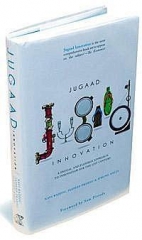 I sometimes face the challenge of explaining Jugaad to the Swiss... For whom the rule is the rule, even if the rule is stupid...
I sometimes face the challenge of explaining Jugaad to the Swiss... For whom the rule is the rule, even if the rule is stupid...
Source : http://www.indiatimes.com/news/meet-wheelchair-bound-harm... ; https://www.theguardian.com/world/2017/apr/25/alcohol-rul... ; http://economictimes.indiatimes.com/news/politics-and-nat... ; http://www.thehindubusinessline.com/opinion/measuring-impact-of-demonetisation-in-india/article9459507.ece
08:00 Posted in Incredible India! | Permalink | Comments (0) | Tags: india, jugaad, creativity, demonetisation, black money, corruption, alcohol, drinking and driving, rule | ![]() Facebook | |
Facebook | |
10/14/2013
Why in India people have red marks on the forehead?
Or, if we dig deeper, Who, when, how, where?
We can distinguish different ‘marks’: the dot in the middle forehead, the line at the root of the hair and the lines and other designs on the forehead. These marks are often red, but not always. It’s not easy to understand the whole thing!
So who wears what? Does a red dot mean a woman is married?
In North India, the red dot on the forehead would be traditionally the prerogative of married women. But not in South India. Anyway it has become a fashion element, which varies in shape, color and material (the sticker – top right photo – has been giving tough competition to the traditional bindi – bottom right).
It seems however that the sindoor applied at the root of the hair (top left) is only applied by married women (a way of saying don’t touch! – like others do with a ring!).
Men can also wear the tilak, for religious or aesthetic reasons.
In fact anyone (Hindu or not, man or woman, Indian or not) will bear a red mark on the forehead after attending a puja (religious ceremony): whether it's a small prayer at home or in the temple, it always ends by a marking on the forehead...
So... why?
Firstly for aesthetic reasons: Indians find it beautiful! Tastes and colors are not to be discussed...
Secondly the dot on the forehead is a Hindu religious symbol since the tilak, placed on the sixth chakra (‘agna’), represents the third eye or the eye of the mind, associated with deities and the concepts of meditation and spiritual enlightenment. It was originally exclusively for ‘knowledge holders’: idols, priests, ascetics. (1) The Vishnu worshippers’ tilak is a U of white color (obtained from sandalwood) drawn around a red or black line (bottom middle photo). And for Shivaites it is formed by three horizontal lines made from ashes (top middle). (2)
But above all there is a 'scientific' explanation: the body– the forehead and the point 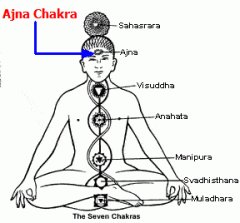 between the two eyes (seat of memory and thoughts) in particular – would produce energy in the form of electromagnetic waves. That’s how stress or anxiety creates heat and causes headaches. (1)
between the two eyes (seat of memory and thoughts) in particular – would produce energy in the form of electromagnetic waves. That’s how stress or anxiety creates heat and causes headaches. (1)
In Tantrism, during meditation, energy flows from the base to the head and leave the body by this point; hence the idea of "plugging the hole" to retain the energy inside. (3)
It is therefore to protect themselves and avoid energy losses that Hindus mark their forehead with a soothing and cooling powder paste.
Indeed, if the 'mark' varies in shape, colour, material and name ('tika', 'pottu', 'sindoor', 'tilak', 'tilakam', 'kumkum' and 'bindi', 'vermilion'), the traditional base (kumkum powder) is obtained by adding a few drop of lime to the yellow turmeric powder which then turns red (and add a little water to make it a paste). Some recipes contain saffron. And it turns out that both turmeric and saffron have medicinal properties as pain-killers! (4)
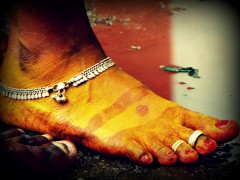 Turmeric is very present in the Indian culture. For example, in Andhra Pradesh, women used to apply it on (and under) the feet every day to protect them (because there were not too many shoes at the time (not that everyone wears shoes today either)). (5)
Turmeric is very present in the Indian culture. For example, in Andhra Pradesh, women used to apply it on (and under) the feet every day to protect them (because there were not too many shoes at the time (not that everyone wears shoes today either)). (5)
Indians may not have invented hot water* (not that they really need it anyways!) but their knowledge about medicinal plants is simply fascinating! Take henna. Not only is it cooling,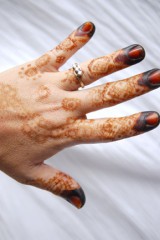 but also it is a coagulant for open wounds. Hence the tradition of Indian women to apply henna on their fingertips to protect themselves from the injuries inherent to manual chores. (6)
but also it is a coagulant for open wounds. Hence the tradition of Indian women to apply henna on their fingertips to protect themselves from the injuries inherent to manual chores. (6)
Here I owe an apology to my mother... After asking a thousand questions she came up with this one: “Tell me, why do these men have orange hair and beard?” I was a little bit upset with myself for not knowing the answer so I just told her whatever non-sense came to my mind: it is because they have used a bad quality dye which has faded!
In fact it seems that some men voluntary decide to have orange hair by dying it with henna. Apparently it could be because some Indians want to hide their gray hair but don’t have enough money to buy a good quality (black) dye. (7) The use of henna can also be linked to religion, as Islam would prohibit any dye except for henna. (8) When I asked my salesguy why do some people have orange hair he just told me that when people start to have gray hair they dye it, sometimes in black, sometimes in orange. No need to overthink it! You see Mum… ;)
* Sheer provocation?? Not only ! Apart from the zero, difficult to think of anything Indians actually invented… It doesn’t mean they are dumb though… They have stuff like the jugaad (in very short, “the gutsy art of overcoming harsh constraints by improvising an effective solution using limited resources”). Read more here.
(2) http://fr.wikipedia.org/wiki/Tilak
(3) http://hinduism.about.com/od/bindis/a/bindi.htm
(4) http://www.safrandugatinais.fr/en/vertus.htm; http://www.healthdiaries.com/eatthis/20-health-benefits-of-turmeric.html
(5) http://www.nandyala.org/mahanandi/?p=925
(6) http://www.ft.com/cms/s/0/d2933fb0-83de-11dc-a0a6-0000779fd2ac.html#ixzz2fW2qoFNh
(7) http://www.earthhenna.com/c158/c105/c98/The-Henna-Plant-c104.html
(8) http://ask.metafilter.com/88073/Why-would-a-Muslim-man-use-henna-to-dye-his-beard-orange
08:00 Posted in Why in India... | Permalink | Comments (0) | Tags: hair, hairs, beard, jugaad, innovation, orange, dye, henna, turmeric, saffron, spices, red dot, red mark, forehead, chakra, energy, meditation, third eye, tika, pottu, sindoor, tilak, tilakam, kumkum, bindi, agna, puja, kumkum powder, vermilion, orange hair | ![]() Facebook | |
Facebook | |















